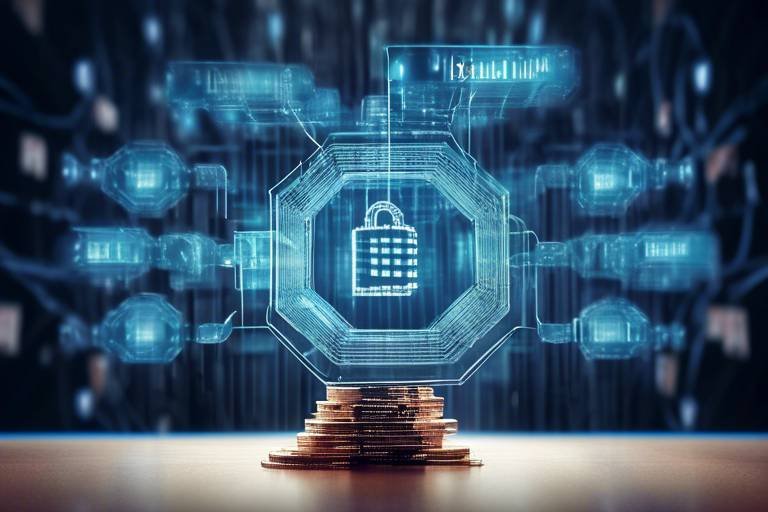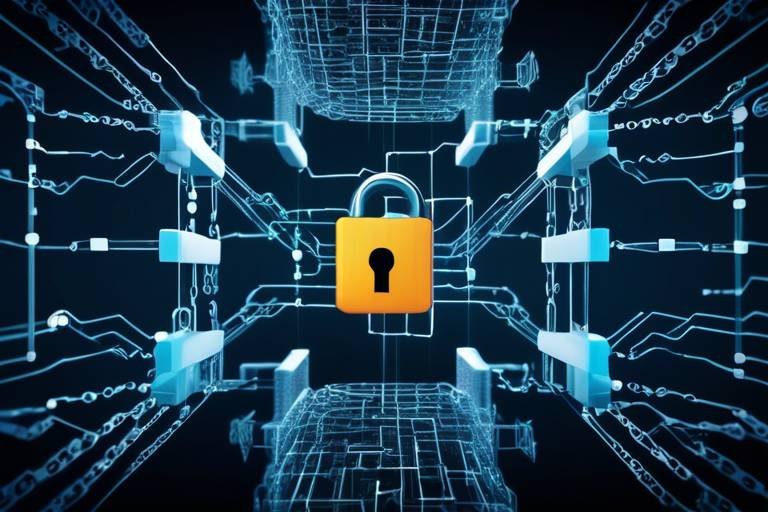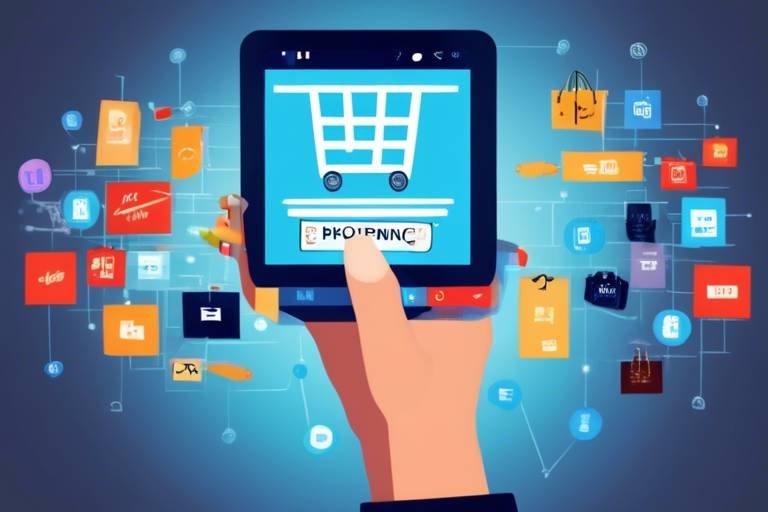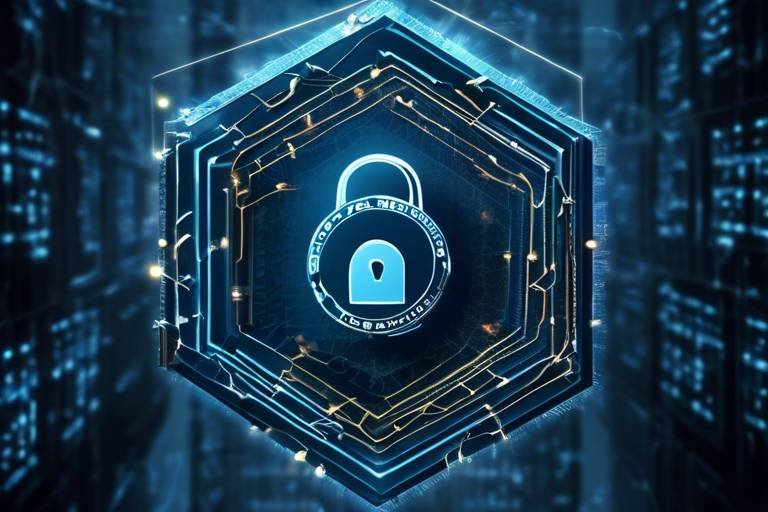The Importance of Data Governance in Blockchain Projects
In the rapidly evolving world of blockchain technology, the significance of data governance cannot be overstated. As organizations dive into blockchain initiatives, they often focus on the technology's innovative aspects, such as decentralization and security. However, without a robust framework for managing data, these projects can falter. Think of data governance as the backbone of a blockchain project; it supports the structure and ensures everything functions smoothly. When implemented effectively, it enhances not only the security and compliance of the project but also its overall success.
Imagine embarking on a thrilling road trip without a map. You might have the best vehicle, but without proper guidance, you risk getting lost or running into obstacles. Similarly, in blockchain projects, data governance acts as that essential roadmap. It guides the handling of data, ensuring that it remains accurate, accessible, and secure. This is critical in a landscape where data is often decentralized and shared across multiple parties. By establishing clear data governance policies, organizations can foster trust among stakeholders and ensure that everyone is on the same page.
Moreover, the impact of data governance extends beyond mere compliance. It influences stakeholder confidence. When stakeholders know that there are stringent governance measures in place, they are more likely to invest their time and resources into the project. This trust is vital in a technology that is still gaining traction in various industries. Therefore, understanding the importance of data governance is not just a technical requirement; it's a strategic necessity that can make or break a blockchain initiative.
In the following sections, we will delve deeper into the various facets of data governance, exploring its principles, challenges, and best practices. By the end, you'll have a comprehensive understanding of how to implement effective data governance strategies in your blockchain projects.
- What is data governance in blockchain?
Data governance in blockchain refers to the policies and processes that ensure the accuracy, accessibility, and security of data within blockchain systems. - Why is data governance important?
It is crucial for maintaining data integrity, ensuring compliance with regulations, and fostering trust among stakeholders. - What are the challenges of data governance in blockchain?
Challenges include managing decentralized data control and navigating complex regulatory landscapes. - How can organizations improve data governance?
By establishing clear roles, implementing robust monitoring systems, and adopting flexible governance frameworks.

Understanding Data Governance
Data governance is the backbone of any successful blockchain initiative. It encompasses the management of data availability, usability, integrity, and security, which are all crucial components in ensuring that data serves its intended purpose effectively. Think of data governance as the rules of the road for data management; without these guidelines, navigating the complex landscape of blockchain can become chaotic and fraught with pitfalls.
At its core, data governance aims to ensure that data is not just available, but also accurate and consistent. Imagine trying to build a house with faulty bricks—no matter how skilled the builders are, the structure will eventually crumble. Similarly, if the data underpinning a blockchain project is flawed, the entire system can suffer, leading to inaccurate transactions and a loss of trust among users.
One of the key aspects of data governance is establishing a clear framework that outlines how data should be handled within the blockchain environment. This framework often includes policies for data access, data quality standards, and compliance with legal requirements. For instance, organizations must determine who has the authority to access specific data sets and under what conditions. This is akin to a librarian deciding who can check out certain books based on their relevance and importance.
Moreover, data governance is not a one-time effort; it requires ongoing management and adaptation. As blockchain technology evolves and new regulations emerge, organizations must be prepared to update their governance frameworks accordingly. This adaptability is essential for maintaining both security and compliance, which are vital for the long-term success of blockchain projects.
In summary, understanding data governance is not just about knowing the rules; it’s about actively engaging with them to create a robust and reliable blockchain ecosystem. By prioritizing data governance, organizations can enhance their operational efficiency, ensure regulatory compliance, and build a foundation of trust with their stakeholders.

Key Principles of Data Governance
When diving into the world of data governance, it's crucial to grasp the key principles that underpin effective management strategies. These principles act as the backbone of any data governance framework, especially within the complex realm of blockchain projects. Let's break down these fundamental principles: accountability, transparency, and data quality, and see how they interconnect to foster success.
Accountability is the cornerstone of data governance. It ensures that there are specific individuals or teams responsible for managing data quality and compliance. In the context of blockchain, where data is immutable and shared across multiple nodes, having clear roles is essential. This clarity not only enhances trust among stakeholders but also establishes a sense of ownership over data practices. Imagine a ship at sea; without a captain, the crew would be lost. Similarly, without accountability, data governance can drift aimlessly.
Next, we have transparency. This principle emphasizes the importance of making data management processes visible to all stakeholders involved. Transparency fosters a culture of trust and collaboration, which is vital in blockchain projects where multiple parties interact. When everyone understands how data is handled, it paves the way for constructive feedback and collective problem-solving. Think of it as a clear window into the data management process; the more you can see, the more you can trust what's happening behind the scenes.
Lastly, we arrive at data quality. Maintaining high data quality is not just a best practice; it's a necessity for the integrity of blockchain systems. Poor data quality can lead to inaccurate transactions, which can erode user trust and jeopardize the entire project. To ensure data quality, organizations must implement robust validation techniques that scrutinize data before it enters the blockchain. This is akin to having a quality control team in a factory; only the best products make it to the shelves.
Incorporating these principles into a data governance framework can significantly enhance the effectiveness of blockchain projects. By fostering accountability, promoting transparency, and ensuring data quality, organizations can navigate the complexities of data governance with confidence. The interplay between these principles creates a solid foundation that not only supports compliance but also drives innovation and trust in blockchain technologies.
| Principle | Description |
|---|---|
| Accountability | Ensures specific individuals or teams are responsible for data quality and compliance. |
| Transparency | Makes data management processes visible to stakeholders, fostering trust and collaboration. |
| Data Quality | Maintains high data quality to ensure the integrity of blockchain systems. |

Accountability in Data Management
Accountability in data management is not just a buzzword; it’s the backbone of successful blockchain projects. When we talk about accountability, we’re referring to the responsibility that individuals or teams have for the quality and compliance of the data they manage. In a blockchain environment, where data is immutable and decentralized, establishing clear roles is crucial. Imagine a ship without a captain; it’s likely to drift aimlessly, right? Similarly, without defined roles in data management, blockchain projects can easily veer off course, leading to trust issues and data mishandling.
To put it simply, accountability ensures that everyone knows who is responsible for what. This clarity not only enhances trust among stakeholders but also strengthens the overall governance framework. When individuals understand their responsibilities, they are more likely to take ownership of their tasks, ensuring that data is accurate and compliant with regulations. For instance, if a data analyst is responsible for validating transactions, they must ensure that their checks are thorough and documented. This level of diligence is what keeps the integrity of the blockchain intact.
Moreover, accountability in data management goes hand-in-hand with the concept of traceability. In blockchain projects, every action taken on the data can be traced back to a specific individual or team. This feature is incredibly powerful because it allows organizations to hold people accountable for their actions. If an error occurs, it’s easier to identify where things went wrong and address the issue promptly. This not only helps in rectifying mistakes but also in preventing them from happening in the future.
To effectively implement accountability in data management, organizations should consider the following strategies:
- Define Clear Roles: Establish specific roles and responsibilities for each team member involved in data management.
- Document Processes: Maintain comprehensive documentation of data handling procedures to ensure transparency and accountability.
- Regular Training: Conduct training sessions to keep team members informed about their responsibilities and the importance of accountability.
- Implement Audit Trails: Utilize blockchain’s inherent capabilities to create audit trails that track data changes and access.
In conclusion, accountability in data management is a fundamental aspect of successful blockchain initiatives. By ensuring that roles are clearly defined and responsibilities are understood, organizations can foster a culture of trust and reliability. This not only enhances the quality of data but also contributes to the overall success of blockchain projects. Remember, in the world of blockchain, accountability is not just a practice; it’s a principle that drives excellence.
Q: What is the role of accountability in blockchain projects?
A: Accountability ensures that individuals are responsible for data quality and compliance, enhancing trust and reliability in data handling practices.
Q: How can organizations implement accountability in data management?
A: Organizations can implement accountability by defining clear roles, documenting processes, providing regular training, and utilizing audit trails.
Q: Why is traceability important in data management?
A: Traceability allows organizations to track data changes back to specific individuals, making it easier to identify and rectify errors.
Q: What are the consequences of lacking accountability in data management?
A: A lack of accountability can lead to data inaccuracies, compliance issues, and a loss of trust among stakeholders.

Defining Roles and Responsibilities
In the complex world of blockchain projects, is crucial for establishing a robust data governance framework. Without clear accountability, the risk of errors and mismanagement increases significantly. Think of it like a well-orchestrated symphony; every musician has a role to play, and if one misses a beat, the entire performance can falter. In a blockchain environment, this means assigning specific individuals or teams to oversee data quality, security, and compliance.
Organizations should start by identifying key stakeholders involved in the project. These can include data owners, data stewards, compliance officers, and IT security personnel. Each role should come with defined responsibilities that align with the overarching goals of the blockchain initiative. For instance:
- Data Owners: Responsible for the data's accuracy and integrity. They ensure that the data is fit for its intended purpose.
- Data Stewards: Act as the custodians of data, managing its lifecycle and ensuring adherence to governance policies.
- Compliance Officers: Ensure that all data management practices meet regulatory requirements, thereby minimizing legal risks.
- IT Security Personnel: Focus on protecting data from unauthorized access and ensuring that security protocols are followed.
By clearly defining these roles, organizations can foster a culture of accountability. Each team member knows what is expected of them, which enhances trust and reliability in data handling practices. Moreover, it facilitates collaboration among different teams, as everyone understands their part in the broader data governance strategy.
To further solidify this framework, organizations may consider implementing a RACI matrix (Responsible, Accountable, Consulted, and Informed). This tool helps clarify who is responsible for each task, who is accountable for its success, who needs to be consulted, and who should be kept informed. Here’s a simple example of a RACI matrix for a blockchain project:
| Role | Data Ownership | Data Stewardship | Compliance | Security |
|---|---|---|---|---|
| Data Owner | R | A | C | I |
| Data Steward | A | R | C | I |
| Compliance Officer | C | C | R | I |
| IT Security | I | I | I | R |
In summary, defining roles and responsibilities is not just a best practice; it is a necessity for effective data governance in blockchain projects. By establishing clear lines of accountability and utilizing tools like the RACI matrix, organizations can enhance their operational efficiency and ensure that data management processes are both effective and compliant.
Q1: Why is defining roles important in data governance?
A1: Defining roles is essential because it establishes accountability and ensures that everyone understands their responsibilities, which enhances trust and efficiency in data management.
Q2: What is a RACI matrix?
A2: A RACI matrix is a tool used to clarify roles and responsibilities in a project. It outlines who is Responsible, Accountable, Consulted, and Informed for each task.
Q3: How can poor role definition affect a blockchain project?
A3: Poor role definition can lead to miscommunication, errors in data handling, and increased risks of non-compliance, ultimately jeopardizing the success of the project.

Monitoring and Compliance
In the world of blockchain projects, are not just buzzwords; they are essential practices that ensure the integrity and success of the initiative. Think of monitoring as the vigilant eye in the sky, constantly observing the data flow and transactions taking place on the blockchain. It’s crucial because, without it, you risk falling into the abyss of data inaccuracies and regulatory pitfalls. Compliance, on the other hand, is like the rulebook that keeps everything in check. It dictates how data should be handled, processed, and stored, ensuring that all actions align with both internal policies and external regulations.
To effectively monitor and maintain compliance in blockchain projects, organizations must implement a robust framework that encompasses various strategies. This framework should include regular audits, real-time monitoring tools, and compliance checklists tailored to the specific needs of the project. For instance, using automated tools can help track data transactions in real time, immediately flagging any discrepancies or unauthorized access attempts. This not only enhances security but also builds trust among stakeholders who rely on the integrity of the blockchain.
Moreover, organizations should establish a culture of compliance where employees are educated about the importance of data governance. This could involve training sessions, workshops, and easy access to compliance resources. After all, even the most sophisticated technology can falter if the people using it are not well-informed about the rules they need to follow.
In addition, regular compliance checks should be conducted to assess whether the blockchain project is adhering to established regulations. These checks can be visualized in a compliance dashboard that provides insights into various compliance metrics, such as:
| Compliance Metric | Description | Frequency of Check |
|---|---|---|
| Data Accuracy | Ensures that recorded data is correct and reliable. | Monthly |
| Access Control | Monitors who has access to data and whether it is appropriate. | Weekly |
| Regulatory Updates | Tracks changes in regulations that may affect the project. | Ongoing |
| Audit Trails | Maintains logs of all transactions for review and accountability. | Quarterly |
Ultimately, the goal of monitoring and compliance in blockchain projects is to create a transparent environment where data integrity is paramount. By fostering a culture of accountability and vigilance, organizations can not only meet regulatory requirements but also enhance their reputation and reliability in the market. So, as you embark on your blockchain journey, remember that a solid monitoring and compliance strategy is your best friend, guiding you toward success while protecting your data and your stakeholders.
- What is the role of monitoring in blockchain projects?
Monitoring helps track data transactions and ensures that all activities on the blockchain are legitimate, accurate, and secure. - How often should compliance checks be conducted?
Compliance checks should be conducted regularly, with some metrics evaluated weekly, monthly, or quarterly, depending on the nature of the data and the project. - Why is data integrity important in blockchain?
Data integrity ensures that the information recorded on the blockchain is accurate and trustworthy, which is essential for user confidence and system reliability. - What tools can be used for monitoring compliance?
Automated monitoring tools, compliance dashboards, and audit trail systems can be very effective in maintaining oversight and ensuring compliance.

Transparency in Data Governance
Transparency in data governance is not just a buzzword; it’s the lifeblood of trust in any blockchain project. Imagine you’re at a dinner party, and everyone is sharing their secrets. If one person is keeping everything to themselves, wouldn’t that make you a bit suspicious? The same principle applies to data governance. When stakeholders can see how data is being managed, it fosters a sense of security and collaboration. This openness is crucial in blockchain projects, where the decentralized nature of the technology means that multiple parties are involved, each with their own interests and concerns.
One of the key aspects of transparency is the clarity of data management processes. When organizations outline their policies and procedures, it allows everyone involved to understand how data is collected, stored, and utilized. This not only enhances accountability but also encourages a culture of shared responsibility. Think of it like a well-orchestrated symphony: each musician knows their part, and together they create a harmonious sound. In the context of blockchain, this harmony translates into smoother operations and fewer misunderstandings.
Furthermore, transparency can significantly reduce the risk of data manipulation or fraud. When data processes are visible, it becomes much harder for any single entity to alter information without detection. This is especially important in blockchain, where the integrity of data is paramount. By implementing transparent data governance frameworks, organizations can build robust systems that not only protect against unauthorized access but also enhance the overall reliability of the blockchain. Stakeholders are more likely to engage and invest in a project when they can see that data is being handled ethically and responsibly.
To illustrate the importance of transparency, consider the following table that outlines some benefits:
| Benefit | Description |
|---|---|
| Enhanced Trust | Stakeholders are more likely to trust a system when they can see how data is managed. |
| Improved Collaboration | Open data processes encourage teamwork and shared goals among participants. |
| Reduced Fraud | Visible processes deter manipulation and enhance data integrity. |
| Better Compliance | Clear governance frameworks make it easier to meet regulatory requirements. |
In conclusion, transparency in data governance is not just a nice-to-have; it’s essential for the success of blockchain projects. By fostering an environment where data processes are clear and accessible, organizations can build trust, enhance collaboration, and ultimately drive project success. Remember, in the world of blockchain, a transparent approach is your best defense against uncertainty and risk.
- What is data governance in blockchain? Data governance in blockchain refers to the management and oversight of data integrity, usability, and security within blockchain systems.
- Why is transparency important in data governance? Transparency is crucial as it builds trust among stakeholders and ensures that data management processes are clear and accountable.
- How can organizations improve transparency? Organizations can improve transparency by clearly documenting their data management policies and making them accessible to all stakeholders.
- What are the challenges of achieving transparency in blockchain? The decentralized nature of blockchain can complicate transparency, as traditional control mechanisms may not apply.
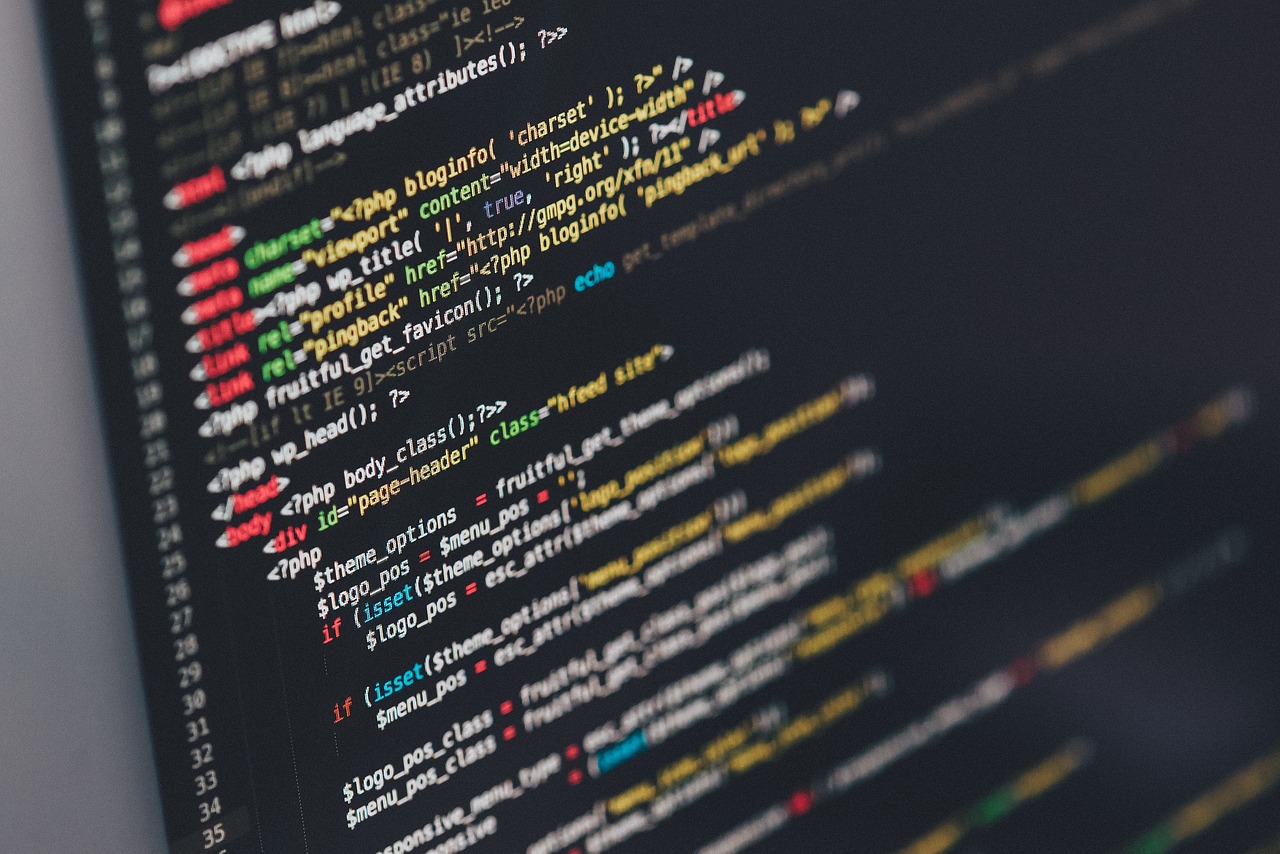
Data Quality in Blockchain
Maintaining high data quality is crucial for the integrity of blockchain systems. Think of data quality as the foundation of a house; if the foundation is weak, the entire structure is at risk. In the world of blockchain, poor data quality can lead to inaccurate transactions, which can undermine user trust and the overall effectiveness of the technology. Imagine trying to build a trustworthy reputation on a shaky ground—it's almost impossible!
To ensure that data remains accurate and reliable, blockchain projects must implement robust data validation techniques. These techniques are like the security guards of your data—always on the lookout to ensure that nothing false or misleading slips through. When data enters the blockchain, it should be subjected to various checks and balances, confirming its authenticity and relevance. This can involve using algorithms that analyze data patterns or employing manual reviews by trusted personnel.
Furthermore, the concept of data integrity cannot be overstated. In blockchain, data integrity refers to the accuracy and consistency of data over its entire lifecycle. It’s akin to ensuring that a recipe is followed precisely; if one ingredient is off, the entire dish can be ruined. Effective governance frameworks are essential in protecting against unauthorized access and data breaches, which could compromise sensitive information. With the rise of cyber threats, safeguarding data integrity is not just a precaution; it’s a necessity.
Additionally, organizations must be aware of the different dimensions of data quality, which can be categorized as follows:
- Accuracy: Ensures that the data is correct and free of errors.
- Consistency: Guarantees that data remains consistent across different systems and platforms.
- Completeness: Confirms that all necessary data is present and accounted for.
- Timeliness: Ensures that the data is up-to-date and relevant for current operations.
By focusing on these dimensions, organizations can create a more reliable and trustworthy blockchain environment. It’s not just about having data; it’s about having the right data. Poor data quality can lead to a domino effect of issues, ranging from operational inefficiencies to legal ramifications. Therefore, investing in data quality is not merely an option; it’s a strategic imperative for any blockchain initiative.

Data Validation Techniques
In the world of blockchain, ensuring that the data recorded is both accurate and reliable is absolutely essential. This is where come into play. Think of data validation as the gatekeeper of your blockchain; it checks every piece of information before it enters the system, ensuring that only the best data gets through. Without these techniques, you risk introducing errors that could compromise the entire integrity of the blockchain.
One of the most effective methods of data validation is through automated validation systems. These systems utilize algorithms to verify data entries against predefined rules. For example, if a blockchain is designed to track financial transactions, the validation system can automatically check if the transaction amounts are within acceptable limits or if the sender has sufficient balance. This not only speeds up the process but also significantly reduces the chance of human error.
Another technique involves the use of smart contracts. Smart contracts are self-executing contracts with the terms of the agreement directly written into lines of code. They can be programmed to validate data before any transaction is executed. For instance, if a user attempts to transfer an asset, the smart contract can verify the ownership and the legitimacy of the transaction before allowing it to proceed. This adds an additional layer of security and trust to the blockchain ecosystem.
Moreover, data reconciliation techniques are crucial in maintaining data quality. This process involves comparing data from different sources to ensure consistency and accuracy. In a decentralized environment like blockchain, where multiple parties may input data, reconciliation helps in identifying discrepancies and correcting them before they can affect the system. For example, if two parties report different transaction amounts for the same event, reconciliation techniques can help pinpoint the error and resolve it.
To sum it up, the effectiveness of blockchain technology heavily relies on robust data validation techniques. By implementing automated validation systems, leveraging smart contracts, and performing regular data reconciliation, organizations can ensure that their blockchain projects maintain a high standard of data integrity. This not only enhances the reliability of the blockchain but also builds trust among users, which is absolutely vital for the success of any blockchain initiative.
- What is data validation in blockchain? Data validation in blockchain refers to the techniques used to verify the accuracy and reliability of data before it is recorded on the blockchain.
- Why is data validation important? It is crucial because it ensures the integrity of the blockchain, preventing errors that could lead to fraudulent activities or loss of trust among users.
- How do smart contracts aid in data validation? Smart contracts automatically execute and validate transactions based on predefined rules, ensuring that only legitimate transactions are processed.
- What are some common data validation techniques? Common techniques include automated validation systems, smart contracts, and data reconciliation methods.

Data Integrity and Security
Data integrity and security are not just buzzwords; they are the backbone of any successful blockchain project. Imagine a fortress; without strong walls and a solid gate, it’s just a house waiting to be invaded. In the world of blockchain, data integrity ensures that the information stored is accurate and reliable, while security protects that information from unauthorized access and potential breaches.
In blockchain, every transaction is recorded in a way that is immutable and transparent. However, this doesn’t mean that the data is automatically secure. Hackers are constantly looking for vulnerabilities, and without a robust governance framework, sensitive information can be at risk. This is where effective data governance comes into play, creating a shield that safeguards the integrity of the data.
To maintain data integrity and security, organizations must implement a multi-layered approach. Here are some essential strategies to consider:
- Encryption: Encrypting data ensures that even if it is intercepted, it remains unreadable to unauthorized parties.
- Access Controls: Limiting access to sensitive data only to those who need it reduces the risk of internal breaches.
- Regular Audits: Conducting frequent audits helps identify any discrepancies or vulnerabilities in the data management process.
- Incident Response Plan: Having a plan in place for data breaches ensures that organizations can act swiftly to mitigate damage.
Furthermore, the use of smart contracts in blockchain projects can enhance data integrity. Smart contracts are self-executing contracts with the terms directly written into code. They automatically enforce and execute agreements, which minimizes human error and increases trust among parties involved. This automation not only streamlines processes but also strengthens the overall security of transactions.
However, challenges remain. The decentralized nature of blockchain means that data is spread across multiple nodes, making it difficult to monitor and control. Organizations must develop innovative strategies to ensure that all nodes adhere to the same data governance policies. This includes creating a consensus mechanism that validates data integrity before it is recorded on the blockchain.
In conclusion, establishing strong data integrity and security measures is crucial for the success of blockchain projects. By implementing comprehensive data governance frameworks, organizations can protect sensitive information, foster trust among stakeholders, and ensure compliance with regulatory standards. The journey to achieving robust data governance may be complex, but the rewards—such as increased user trust and project success—are undeniably worth the effort.
- What is data integrity in blockchain?
Data integrity in blockchain refers to the accuracy and consistency of data stored on the blockchain. It ensures that once data is recorded, it cannot be altered or deleted without consensus from the network.
- How does blockchain ensure data security?
Blockchain ensures data security through cryptographic techniques, decentralized storage, and consensus mechanisms, which collectively protect against unauthorized access and data tampering.
- What are the main challenges in maintaining data integrity in blockchain?
The main challenges include the decentralized nature of blockchain, potential vulnerabilities in smart contracts, and the need for robust governance policies that all participants adhere to.
- Why is data governance important in blockchain projects?
Data governance is essential in blockchain projects to ensure data quality, compliance with regulations, and to maintain trust among stakeholders by establishing clear processes for data management.

Challenges in Data Governance
When diving into the world of data governance within blockchain projects, it's essential to recognize the unique challenges that arise. Unlike traditional data management systems, blockchain operates on a decentralized model, which can create a myriad of complications. For starters, the very nature of decentralization means that control over data is distributed among multiple parties. This can lead to difficulties in establishing clear ownership and accountability for data quality and compliance. Imagine trying to herd cats; each cat represents a different stakeholder with their own interests and priorities. Without a unified approach, maintaining data integrity becomes a daunting task.
Moreover, the regulatory landscape surrounding blockchain technology is constantly evolving. As governments and organizations scramble to keep pace with technological advancements, they often introduce new regulations that can impact how data is managed. This puts additional pressure on organizations to develop flexible governance frameworks that can adapt to changing rules while ensuring compliance. Think of it as trying to dance to a song that keeps changing tempo; it requires agility and awareness to stay in sync.
Another significant challenge is the issue of data privacy and security. While blockchain is often praised for its security features, it is not impervious to attacks. Organizations must implement robust data governance policies that not only protect sensitive information from unauthorized access but also ensure that data handling practices comply with privacy laws such as GDPR. This dual responsibility can be overwhelming, especially for teams that are already stretched thin. Regular audits and compliance checks become crucial in this scenario, as they help identify potential vulnerabilities before they can be exploited.
In addition to these challenges, the sheer volume of data generated by blockchain transactions can be staggering. Managing this data effectively requires sophisticated tools and methodologies. Organizations must invest in advanced data management technologies that can handle large datasets while maintaining high levels of accuracy and reliability. Without the right tools, the risk of data corruption or loss increases significantly, which can have dire consequences for project success.
To further illustrate these challenges, here is a table summarizing key issues faced in data governance for blockchain projects:
| Challenge | Description |
|---|---|
| Decentralization | Difficulty in establishing clear ownership and accountability for data. |
| Regulatory Compliance | Need for flexible frameworks to adapt to evolving regulations. |
| Data Privacy and Security | Protecting sensitive information from unauthorized access while ensuring compliance with privacy laws. |
| Data Volume Management | Challenges in managing large datasets effectively without loss of accuracy. |
In summary, the challenges of data governance in blockchain projects are multifaceted and require a proactive approach. Organizations must be willing to adapt, invest in the right technologies, and foster a culture of accountability and transparency among all stakeholders. Only then can they hope to navigate the complexities of data governance in this rapidly evolving landscape.
- What is data governance in blockchain? Data governance in blockchain refers to the framework and policies that ensure the accuracy, integrity, and security of data within blockchain systems.
- Why is accountability important in data governance? Accountability ensures that individuals or teams are responsible for maintaining data quality and compliance, which builds trust in data handling practices.
- How can organizations address challenges in data governance? Organizations can address challenges by implementing flexible governance frameworks, investing in advanced data management technologies, and fostering a culture of transparency.

Decentralization Issues
Decentralization is one of the most celebrated features of blockchain technology, but it also introduces a set of complex issues that can challenge effective data governance. Unlike traditional systems where a single entity holds control over data, blockchain's distributed nature means that data is spread across multiple nodes. This can lead to a lack of centralized oversight, making it difficult to enforce data governance policies consistently. Imagine trying to manage a team where each member operates independently without a clear leader; it can quickly spiral into chaos!
One of the primary challenges is the inconsistency of data management practices across different nodes. Each participant in a blockchain network may have their own interpretation of governance protocols, leading to discrepancies in how data is recorded, validated, and accessed. This lack of uniformity can undermine the integrity of the entire system, as the accuracy of data is paramount for trust and reliability.
Moreover, the decentralized nature complicates accountability. When something goes wrong, pinpointing who is responsible can resemble a game of hide and seek. Without a centralized authority, organizations must establish clear frameworks that delineate roles and responsibilities among all stakeholders. This is crucial not just for compliance, but also for fostering a culture of responsibility where everyone understands their part in maintaining data quality.
Another significant concern is the interoperability of different blockchain systems. As various organizations implement their own blockchain solutions, the challenge of ensuring that these systems can communicate and share data effectively arises. If two blockchains can't talk to each other, it creates silos of information that can hinder collaboration and data sharing. Imagine trying to connect two different puzzle pieces; if they don’t fit, the bigger picture remains incomplete.
To address these decentralization issues, organizations need to adopt a proactive approach to data governance. This includes establishing clear governance frameworks that are flexible enough to adapt to the unique characteristics of decentralized systems. Regular training and awareness programs can also help ensure that all stakeholders understand the importance of adhering to governance policies.
In conclusion, while decentralization offers numerous benefits, it also poses unique challenges that require thoughtful strategies to navigate. Organizations must embrace these complexities and develop robust governance frameworks that can thrive in a decentralized environment, ensuring data integrity and compliance in their blockchain initiatives.
- What is data governance in blockchain? Data governance in blockchain refers to the management of data availability, usability, integrity, and security within blockchain systems.
- Why is accountability important in data governance? Accountability ensures that individuals or teams are responsible for data quality and compliance, enhancing trust in data handling practices.
- How does decentralization affect data governance? Decentralization complicates data governance by creating challenges in accountability, consistency, and interoperability among different blockchain systems.
- What are some strategies to improve data governance in decentralized systems? Establishing clear governance frameworks, regular training, and promoting a culture of responsibility can help improve data governance in decentralized environments.
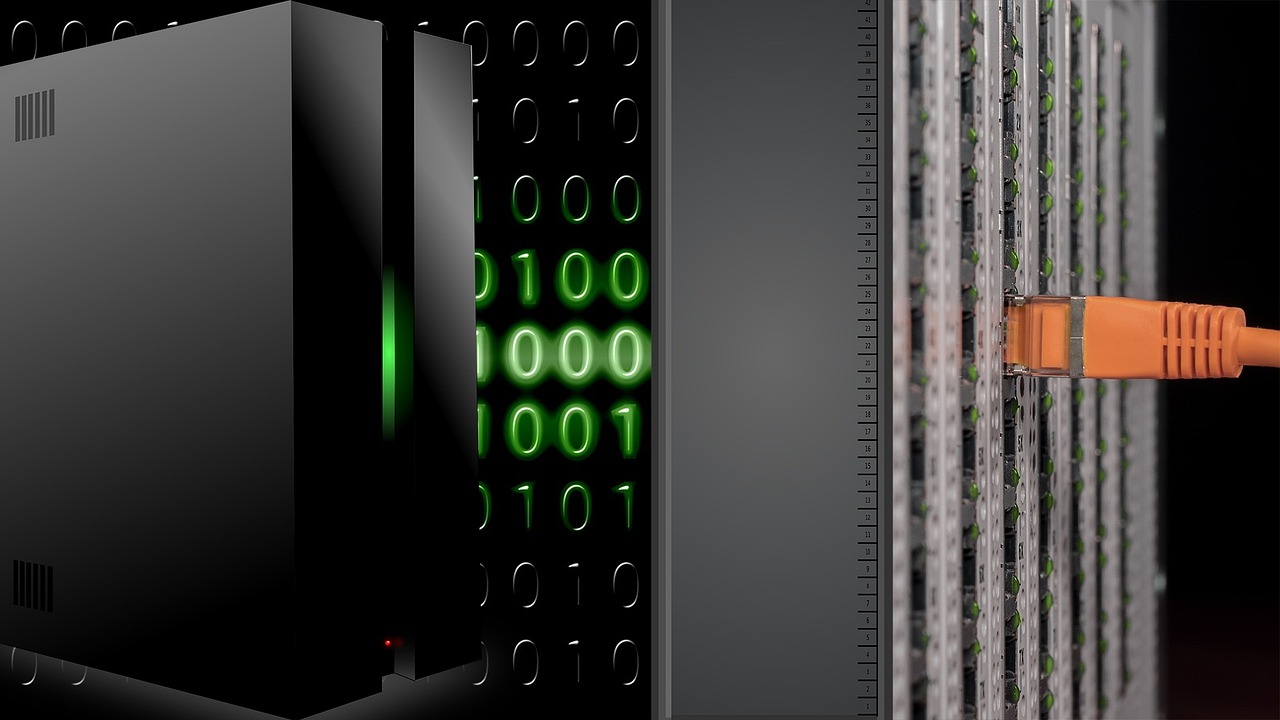
Regulatory Compliance
When diving into the world of blockchain, one of the most significant hurdles that organizations encounter is . The landscape of regulations is constantly evolving, and what might be acceptable today could change tomorrow. This dynamic environment creates a complex web of rules that organizations must navigate to ensure they operate within legal boundaries.
Regulatory compliance in blockchain projects is not just a box to check; it's a vital component that can determine the success or failure of an initiative. Blockchain technology, with its decentralized nature, often challenges traditional regulatory frameworks that were designed for centralized systems. This means that organizations need to be proactive, staying ahead of the curve by continuously monitoring regulatory changes and adapting their governance frameworks accordingly.
To effectively manage compliance, organizations should consider the following key aspects:
- Understanding Regulatory Requirements: It's essential to have a comprehensive grasp of the regulations that apply to your specific blockchain project. This includes data protection laws, financial regulations, and industry-specific guidelines.
- Implementing Flexible Governance Frameworks: Given the fast-paced nature of regulatory changes, organizations must develop governance frameworks that are adaptable. This flexibility allows for quick adjustments in response to new laws or amendments.
- Engaging with Regulatory Bodies: Establishing open lines of communication with regulators can provide insights into upcoming changes and help organizations align their practices with regulatory expectations.
Moreover, organizations can benefit from conducting regular compliance audits. These audits serve as a checkpoint, ensuring that data governance practices align with regulatory standards. They also help in identifying potential risks before they escalate into significant issues.
In addition to audits, leveraging technology can enhance compliance efforts. Automated compliance tools can monitor transactions and flag any anomalies that may indicate non-compliance, providing an additional layer of security. This technological approach not only streamlines the compliance process but also reduces the risk of human error.
In conclusion, while the challenges of regulatory compliance in blockchain projects are daunting, they are not insurmountable. By understanding the regulatory landscape, implementing flexible governance frameworks, engaging with regulators, and utilizing technology, organizations can navigate these complexities successfully. This proactive approach not only mitigates risks but also enhances the overall integrity and trustworthiness of blockchain initiatives.
- What is regulatory compliance in blockchain?
Regulatory compliance in blockchain refers to the adherence to laws and regulations that govern the use of blockchain technology and the data it manages. - Why is regulatory compliance important for blockchain projects?
It is crucial for ensuring that blockchain initiatives operate within legal boundaries, which helps to build trust among users and stakeholders. - How can organizations ensure compliance?
Organizations can ensure compliance by understanding regulatory requirements, implementing flexible governance frameworks, and conducting regular audits. - What role does technology play in regulatory compliance?
Technology can automate compliance monitoring and reporting, reducing the risk of human error and streamlining the compliance process.
Frequently Asked Questions
- What is data governance in blockchain projects?
Data governance in blockchain refers to the management of data availability, usability, integrity, and security within blockchain environments. It ensures that the data recorded on the blockchain is accurate, consistent, and reliable, which is essential for the success of any blockchain initiative.
- Why is accountability important in data governance?
Accountability is crucial because it designates specific individuals or teams to be responsible for data quality and compliance. This clarity fosters trust and reliability in how data is handled, ensuring that everyone knows their roles and responsibilities in maintaining data integrity.
- How does transparency impact blockchain projects?
Transparency enhances trust among stakeholders by making data management processes and policies visible. When everyone involved can see how data is managed, it encourages collaboration and a shared commitment to maintaining high standards of data governance.
- What are the challenges of data governance in decentralized systems?
The decentralized nature of blockchain complicates traditional data governance approaches. Organizations must navigate issues like lack of centralized control and the need for adaptable strategies that respect the unique characteristics of blockchain technology.
- How can organizations ensure data quality in blockchain?
Implementing robust data validation techniques is key to maintaining high data quality. This involves setting up processes that verify the accuracy and reliability of data before it is recorded on the blockchain, thus enhancing the overall integrity of the system.
- What role does regulatory compliance play in data governance?
Regulatory compliance is a significant aspect of data governance, especially in the ever-evolving landscape of blockchain regulations. Organizations must develop flexible governance frameworks that can adapt to new rules while ensuring that data management practices remain compliant and minimize risk.
- How can organizations monitor compliance in blockchain projects?
Regular monitoring and compliance checks are essential for upholding data governance standards. Organizations can establish auditing processes and utilize automated tools to ensure that their blockchain projects consistently meet both regulatory and organizational requirements.









